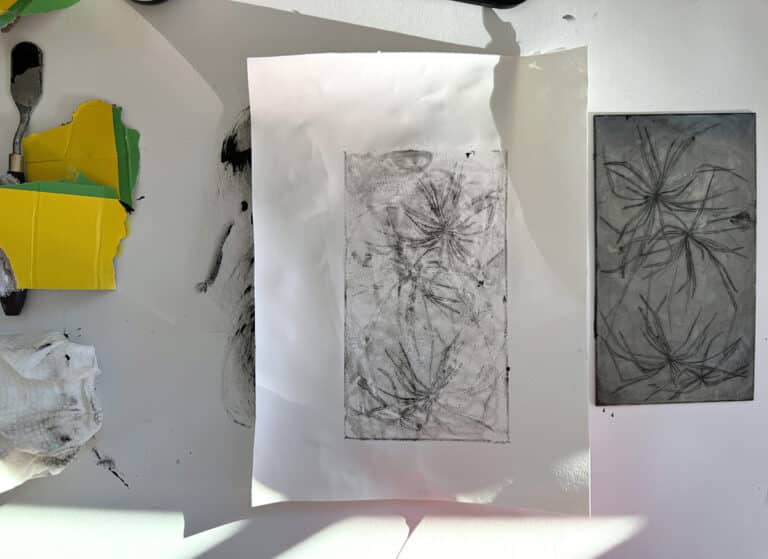Many art teachers include figure drawing in their curriculum. Students learn to draw the figure in proportion by learning a few basic rules of human anatomy. Typically, the art teacher demonstrates tips like how the average adult figure should be about seven and a half heads tall. Students can reference diagrams and guides as they practice figure drawing on their own.
When it comes time to draw from observation, this activity can be tricky in the art room. Some teachers ask for student volunteers. The volunteer models different poses while the rest of the class draws what they see. Some teachers have students use wooden mannequins. Students can pose the figure and create quick gestures from observation.
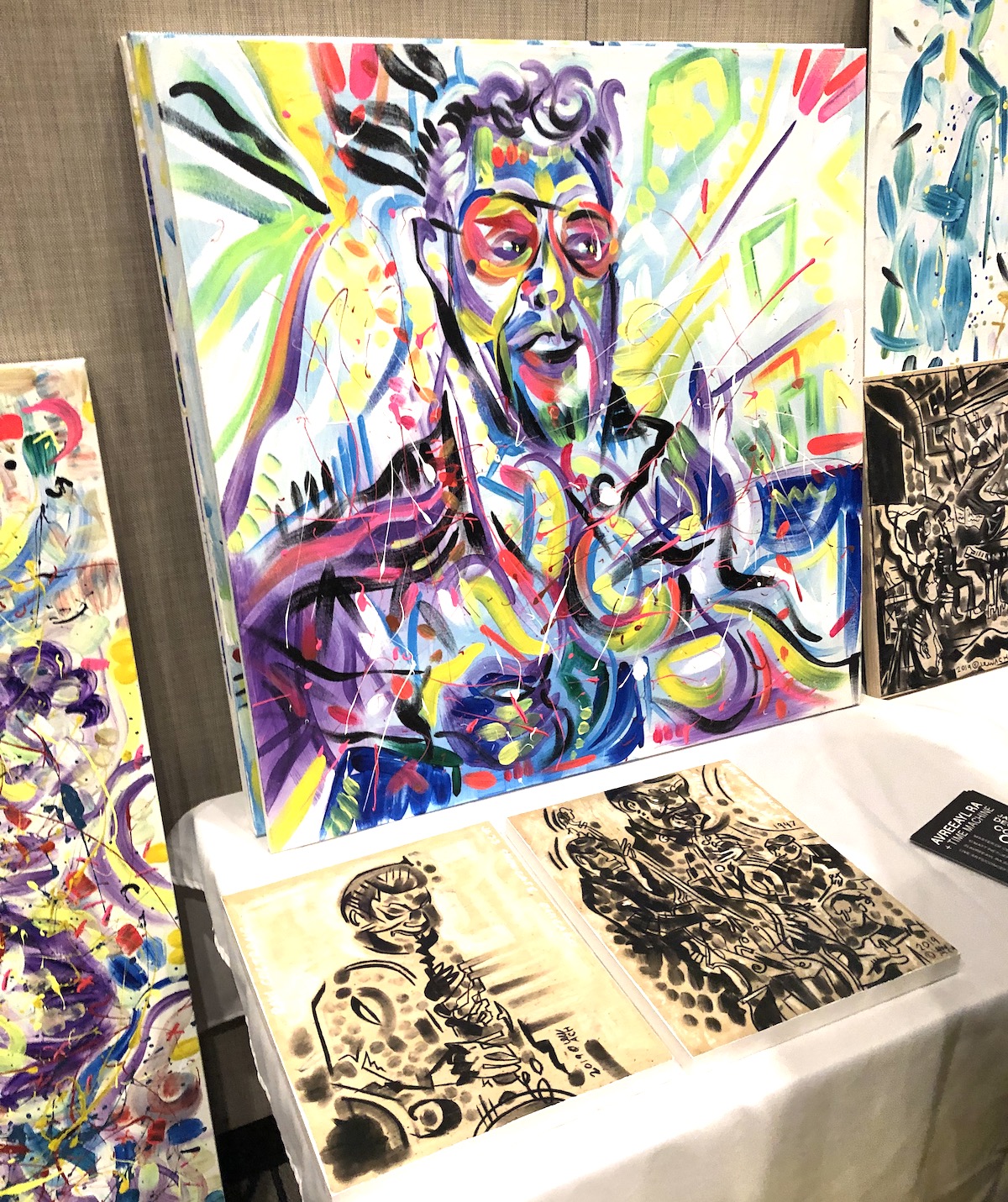
Many students may feel self-conscious with the attention of all of their classmates looking and drawing them. Students are at an age with heightened insecurities. When the teacher asks them to pose for the class, this can cause a lot of anxiety. Traditional poses are awkward, and students may feel uncomfortable with all eyes on them.
Tutu Tuesdays: An Innovative Way to Ramp Up Your Next Figure Drawing Unit!
Wooden mannequins can be found in almost every art room, but few teachers have enough for each student to individually pose and observe. The mannequin also lacks human expression and unique features to make students’ drawings more interesting. Students can add creative details from their imagination, but if the goal is to learn to draw from observation, then this exercise doesn’t quite cut it.
How to Make the Most of Your Figure Drawing Unit? Add music!
We want students to get the most out of our figure drawing unit. Students may not be comfortable standing still in traditional poses, and the wooden mannequins lack lifelike detail. One way to make your figure drawing unit more engaging is to incorporate your students’ talents and interests.
Inspiration: Lewis Achenbach and His “Jazz Occurrences”
Contemporary artist, Lewis Achenbach, creates vibrant figure paintings of jazz musicians in the Chicago area. While others are enjoying a night out at a jazz club, Achenbach is there with paper and colors, drawing from observation, but also drawing what he hears. He frequently uses acrylics on canvas and pastels on wood.
Achenbach creates what he calls “Jazz Occurrences,” where an audience can watch him paint while a live musician performs. The viewer can see that as the musician is improvising notes, Achenbach is improvising with his choice of color and mark-making. A quick melody may inspire aggressive marks, while a slower tempo could be represented with a wavy line. A drummer once told the artist, “You paint like I play.”
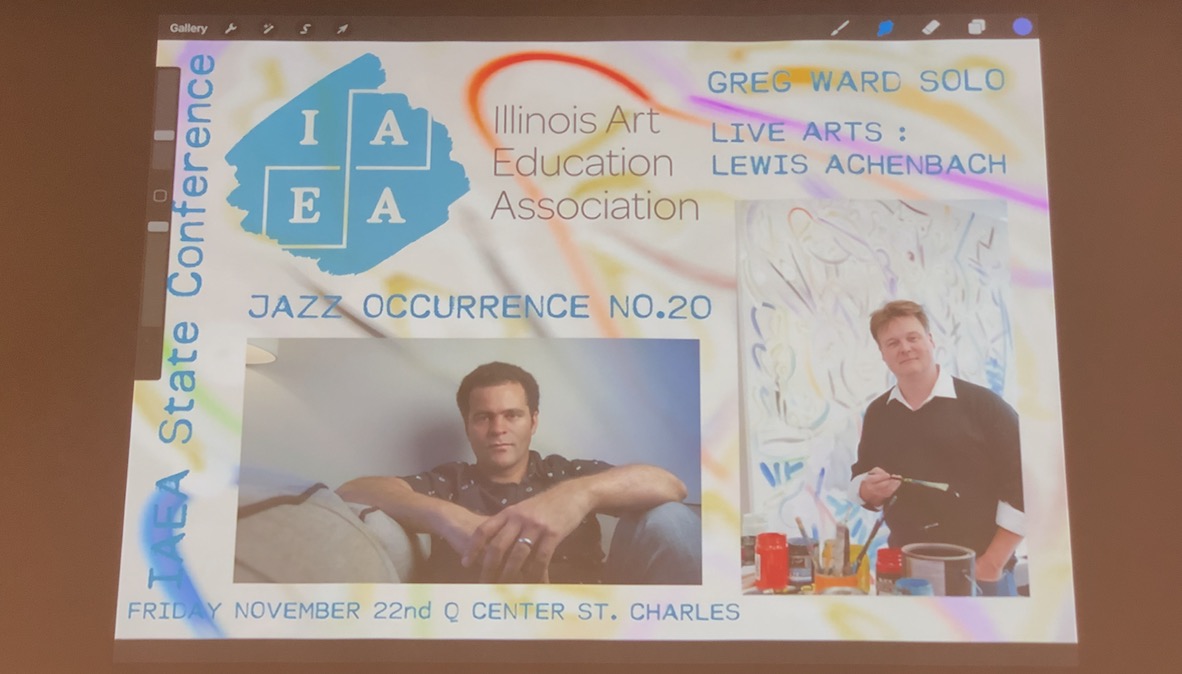
Lewis Achenbach spoke and demonstrated to a room full of art educators at the 2019 Illinois Art Education Association conference. After explaining his process and sharing examples of his work, Achenbach treated the audience to a live performance. While musician Greg Ward played a solo on the saxophone, Achenbach created a visual artwork on his iPad. The artwork was projected in real-time on the presentation screen. Educators could see how the artist combined sonic art with visual art.
Practical Applications in the Art Room
Just as Achenbach creates from observing jazz musicians, your students could create their own “occurrences.” Share Achenbach’s process as an example of figure drawing in action. Ask your students if anyone in the school band or orchestra would be willing to play for the class. While posing for a traditional figure drawing may be uncomfortable, some students may be interested in an opportunity to perform.
Abstraction and Mood
Once students have learned figure drawing proportions, you can introduce Achenbach as an example of abstraction. Now that your students know the basics, they can apply what they learned and be more expressive. Students can communicate action and mood by using different colors, shapes, and marks. Students can respond to the musician’s tone, pitch, and tempo. If you have multiple volunteers, students can reflect on how the difference in instruments and/or song selections influenced their drawings.

Digital Figure Drawing
Just as Achenbach performed his “Jazz Occurrence” using an iPad, your students could create similar figure drawings on their digital devices. You could demonstrate different brush tools and effects. Students could experiment with gestures and adding new layers to build up their digital image.
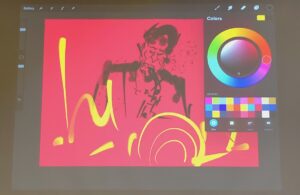
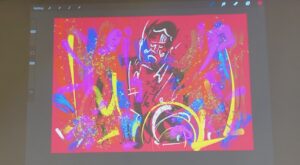
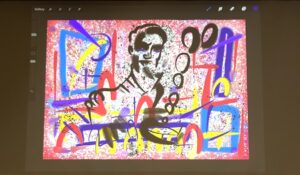
Students could create a time-lapse of their drawing set to music. Advanced students could create animations of their figures. You could encourage students to combine traditional art supplies with digital media. Students could take a photo of their painting. They can import this image to serve as a background for their digital sketch.
6 Fun Ways to Experiment with Digital Drawing
Recognition of Other Student Talents and Interests
Student musicians can bring new life to your figure drawing unit, but you could also recognize other students’ talents and interests.
Here is a list of action poses that may interest your students:
- Student-athletes dribbling, passing, setting, or cheering.
- Student dancers/TikTokers could perform a routine.
- Students could play a quick game like Jenga, cards, or hackeysack.
- Students can showcawe unique talents like lassoing, gymnastics, or martial arts.
- Students can play a game on their phone or device.

When you ask a student to sit or stand still in front of the class, you may make that student feel uncomfortable. If you ask a student to perform an action that already interests them, you take away some of that anxiety. At the same time, you’re recognizing your students’ talents. Not every student wants attention, but some of our students are often overlooked. This figure drawing activity can give those students an opportunity to shine.
7 Ideas to Pump up Your Drawing Curriculum
Final Thoughts
Lewis Achenbach is a contemporary example of an artist who creates art from observation. He abstracts the figure and draws what he hears while observing the musician. His drawings and paintings aren’t representational, but instead, capture the essence of the performance. This can be a great example for your students who may feel intimidated by drawing realistically. Encourage them to try drawing gestures that reflect movement, emotion, and sound.
You will be amazed at the energy in your art room while students sketch vibrant figures as unique as they are. Figure drawing is an important skill for young artists to develop. Students learn to pay attention to size and shape relationships and to better understand human anatomy. Asking for student volunteers can sometimes feel like pulling teeth, but if you make it fun, you can make your figure drawing lesson more engaging.
How do you approach figure drawing in the art room?
What artists do you share as examples in your figure drawing unit?
How do you set up your classroom and materials for figure drawing?
Magazine articles and podcasts are opinions of professional education contributors and do not necessarily represent the position of the Art of Education University (AOEU) or its academic offerings. Contributors use terms in the way they are most often talked about in the scope of their educational experiences.




